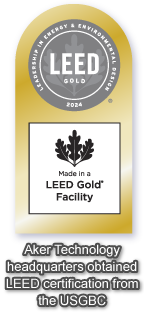What is AEC-Q200? What is IATF 16949?
A.
AEC-Q200 was created by the Automotive Electronics Council (AEC), an organization that was founded in the 1990s by three of the United States’ major automobile manufactures – Chrysler, Ford, and General Motors. Its purpose was to establish global common part-qualification and quality-system standards for automotive electronic components. They are the standardization body responsible for establishing reliability and certification benchmarks for electronic components. Components that meet the specifications and standards set by the committee are suitable for use in the harsh automotive environment without additional component-level qualification testing.
The standard’s core requirements, include:
The standard’s core requirements, include:
- Stress Testing: Components are subjected to various stress tests such as temperature cycling, humidity, vibration, mechanical shock, and more.
- Electrical Performance: Testing for electrical parameters like capacitance, resistance, inductance, and insulation resistance.
- Mechanical Performance: Ensuring mechanical robustness and integrity.
- Environmental Testing: Exposure to environmental factors like salt spray, thermal shock, and moisture resistance.
Components must pass a series of tests specified in AEC-Q200 to be qualified. The testing process ensures that components meet the necessary reliability and durability standards for automotive use.
IATF 16949 was developed by the International Automotive Task Force (IATF) and is aligned with ISO 9001, incorporating additional requirements specific to the automotive industry. This international standard for quality management systems (QMS) is specifically designed for the automotive sector. It focuses on continuous improvement, defect prevention, and reduction of variation and waste in the supply chain from design to delivery.
The standard’s core requirements, include:
The standard’s core requirements, include:
- Quality Management System (QMS): Establishing a structured QMS that meets customer and regulatory requirements
- Leadership and Commitment: Involvement of top management in the QMS
- Planning: Risk management, setting quality objectives and planning changes
- Support: Resource management, including human resources, infrastructure and environment
- Operation: Product lifecycle processes, from design to delivery
- Performance Evaluation: Monitoring, measurement, analysis, and evaluation of QMS performance
- Improvement: Continuous improvement and corrective actions


